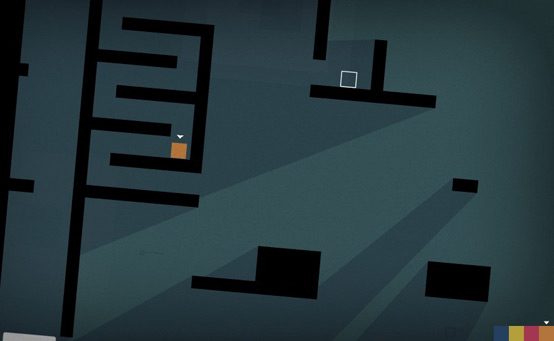
Despite being two-dimensional in appearance, the game’s cast of characters exuded more personality and depth than that of some games propped up by millions of dollars of development funding. When the curtain finally closed on Thomas Was Alone, I couldn’t help but feel touched. It’s never more than mildly challenging.Cloud syncing between PS3 and VITA versions is seamless.Mechanically clever, belies its appearance.Incredibly emotive for something so ostensibly simplistic.Even for those who don’t usually enjoy developer commentaries, it proves insightful and is well worth a listen. Unlocked simultaneously through Sony’s “Cross-Buy” system, both include the same content as well as Mike Bithell’s commentary which can be toggled on or off during gameplay. Better still, there is no single method to reaching a portal, the game often enabling you to reach the end goal using a variety of character combinations.ĭue to its minimalist design influences and identical control scheme, there is no real difference between the PlayStation 3 and Vita versions of Thomas Was Alone. This is further enhanced by the game’s even pacing, filtering in complex levels while occasionally presenting players with stages that can be tackled at a leisurely pace. Controls are tight and responsive, complemented by pitch perfect level design which never borders on monotony or frustration. The gameplay itself holds up just as well as the story it helped to inspire. To think that it all starts with one red rectangle and a simple press of the “X” is just amazing.


It’s really clever stuff and, when combined with witty pop-culture references and David Housden’s BAFTA-nominated score, creates an endearing tale that helps to carry the game along. It’s a mechanic we’ve seen dozens of times but in Thomas Was Alone it is translated as the internal hardship of a downtrodden woman trying to find comfort in helping her friends reach greater heights. Laura, for instance, is a horizontal rectangle who (yes, I said who) can be jumped on to access higher platforms. What’s more is that the personal development of these characters and their relationships are metaphors used to reflect the game’s mechanics. In giving each shape its own name and personality, the ingenious indie has somehow created a cast of grounded, believable characters, brought to life by the narration of comedian, Danny Wallace. Instead of treating the game’s pool of rudimentary polygons as what they physically are, Mike Bithell has done something small yet amazing.


 0 kommentar(er)
0 kommentar(er)
